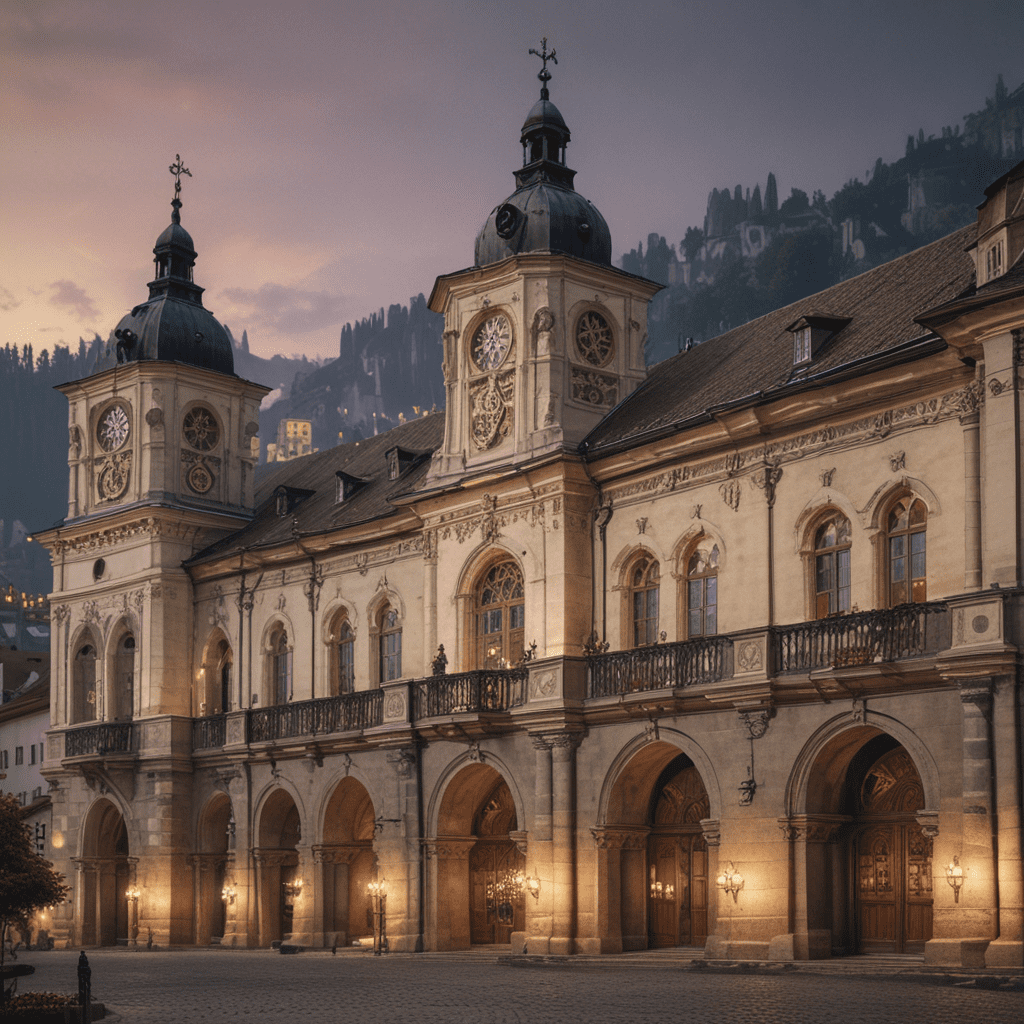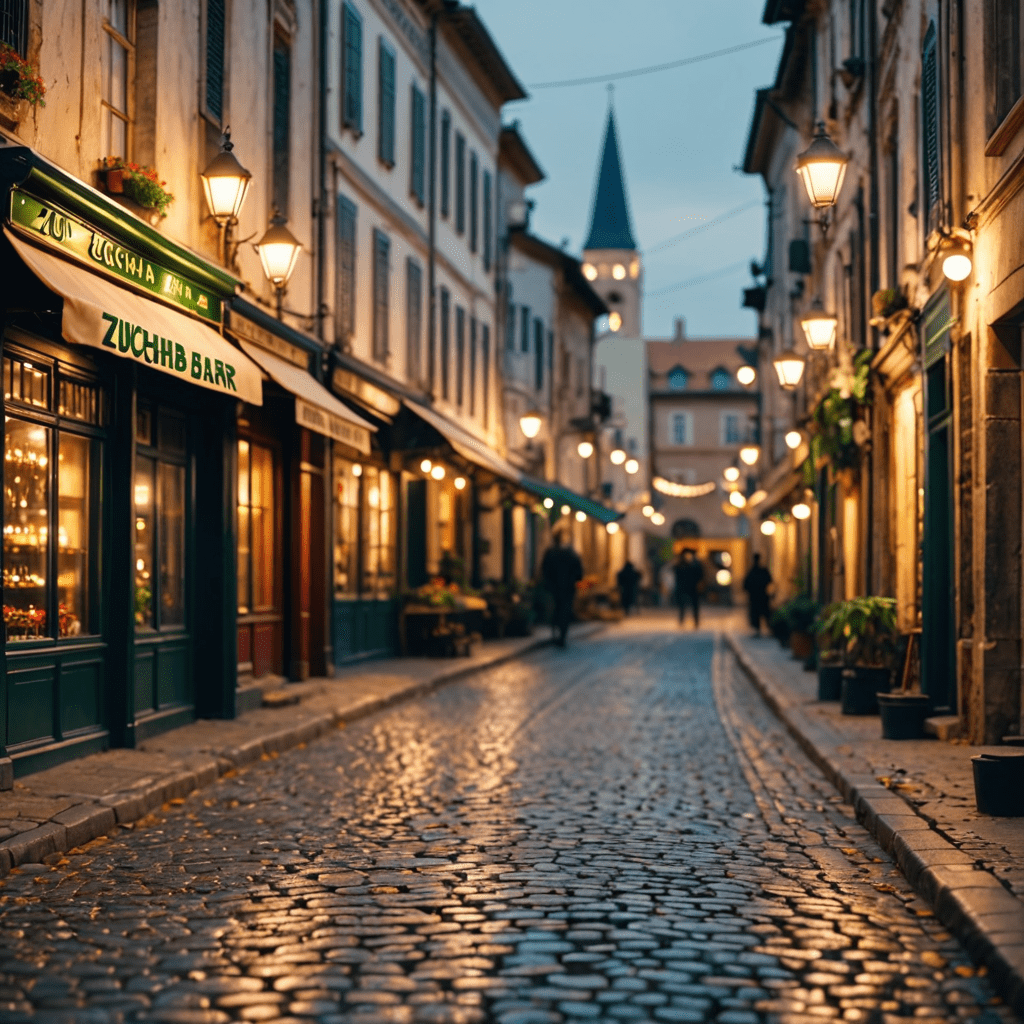
1. Historical Background of Florian Monastery
Nestled amidst the picturesque landscapes of Upper Austria, the Florian Monastery stands as a testament to centuries of rich history and architectural splendor. Its origins can be traced back to the 4th century AD, when Saint Florian, a Roman soldier and Christian martyr, was martyred on the site. In the 8th century, a Benedictine monastery was established in his honor, and over the centuries, it grew into a prominent religious and cultural center.
2. Architectural Significance
The Florian Monastery is a masterpiece of Baroque architecture, with its striking white facade and intricate ornamentation. The monastery complex encompasses a series of interconnected buildings, including the Stiftskirche (Abbey Church), the Baroque Library, and the Imperial Apartments. The overall design showcases the Baroque style's grandeur and elegance, with its harmonious curves, elaborate sculptures, and opulent interiors.
3. The Stiftskirche (Abbey Church)
The heart of the monastery complex is the Stiftskirche, a magnificent Baroque basilica constructed in the 18th century. The church boasts a soaring dome, adorned with intricate frescoes depicting scenes from the life of Saint Florian. The interior is equally impressive, with its lavish marble altars, gilded stuccowork, and exquisite paintings. The Stiftskirche is renowned for its exceptional acoustics and hosts regular concerts and choral performances.
4. The Baroque Library
Adjoining the Stiftskirche is the Baroque Library, an architectural gem that houses a vast collection of over 150,000 volumes. The library's opulent interior features soaring bookshelves, intricate carvings, and a delicate ceiling fresco by renowned artist Bartolomeo Altomonte. The collection encompasses rare manuscripts, theological treatises, and scientific works, offering a glimpse into the intellectual and spiritual pursuits of the monastic community.
5. The Imperial Apartments
The Florian Monastery also boasts a suite of grand Imperial Apartments, once reserved for visiting royalty and dignitaries. The apartments have been meticulously preserved and offer a fascinating glimpse into the opulent lifestyle of the Habsburg court. The rooms are adorned with intricate tapestries, elaborate furniture, and priceless paintings, showcasing the wealth and prestige of the monastery during its heyday.
6. The Treasury and Art Collection
The Florian Monastery houses a significant Treasury and Art Collection, showcasing a wealth of religious artifacts and artistic masterpieces. Among the highlights are the exquisite Baroque monstrances, elaborate liturgical vestments, and a rare collection of ivory carvings. The monastery also boasts a collection of paintings by renowned artists such as Bartolomeo Altomonte and Martin Johann Schmidt, providing a glimpse into the artistic patronage of the monastery throughout history.
7. The Monastic Community
At the heart of the Florian Monastery lies a vibrant monastic community, dedicated to the Benedictine Rule of prayer, work, and hospitality. The monks engage in daily liturgies, tending to the needs of the monastery, and offering spiritual guidance to visitors. By embracing a life of simplicity and service, the community perpetuates the legacy of Saint Florian and fosters a strong sense of spirituality within the monastery walls.
8. The Monastery Museum
For those seeking a deeper understanding of the monastery's history and significance, the Monastery Museum provides a comprehensive overview. The museum houses a fascinating collection of artifacts, documents, and interactive exhibits, showcasing the monastic life, artistic contributions, and cultural heritage of Florian Monastery. Visitors can gain insights into the daily routines of the monks, their role in the community, and the monastery's contribution to education, music, and the arts.
9. Visitor Information and Events
The Florian Monastery welcomes visitors from around the world, offering guided tours of its architectural and artistic treasures. Visitors can explore the Stiftskirche, marvel at the Baroque Library, and delve into the history of the monastery's monastic community. The monastery also hosts regular events, including concerts, exhibitions, and lectures, providing opportunities for cultural enrichment and spiritual exploration. Check the monastery's website for updated information on visiting hours, tour availability, and upcoming events.
10. Conclusion: The Legacy of Florian Monastery
Florian Monastery stands as a testament to the enduring power of faith, art, and community. From its humble beginnings as a pilgrimage site to its present-day status as a cultural and spiritual hub, the monastery has played a vital role in shaping the history and heritage of Upper Austria. Through its architectural splendor, rich art collection, vibrant monastic community, and dedication to education and the arts, Florian Monastery continues to inspire and enrich visitors, leaving a lasting impression on all who come within its hallowed halls.
FAQ:
Q: What are the visiting hours for the Florian Monastery?
A: Guided tours are typically available during specific hours, which may vary depending on the season. Check the monastery's website for the most up-to-date information.
Q: Are there admission fees for visiting the monastery?
A: Yes, there are nominal admission fees for guided tours and access to certain areas of the monastery.
Q: Is photography allowed within the monastery?
A: Photography is generally permitted in most areas of the monastery, but using flash is prohibited to protect the delicate artwork.
Q: Are there any special events or programs offered at the monastery?
A: Yes, the monastery hosts regular events throughout the year, including concerts, exhibitions, and lectures. Check the monastery's website for details on upcoming events.

